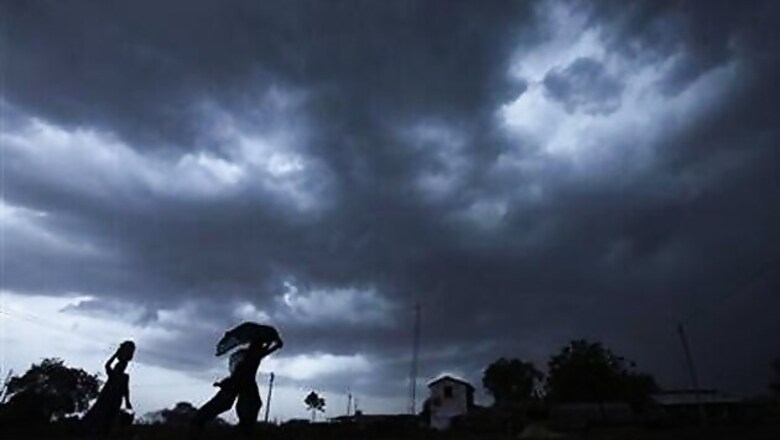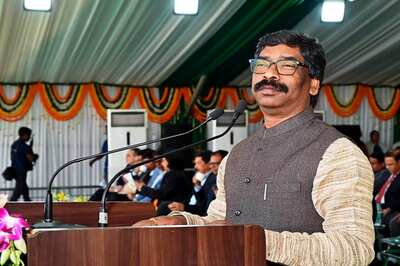
views
New Delhi: India's crucial monsoon rains are now expected to be below average, the government said on Monday, turning to contingency plans as rainfall has been about a fifth below normal so far and recent rains have not been enough to ease concerns.
The monsoon lost momentum last week, falling 22 percent short of averages and raising the risk of a drought year in one of the world's leading producers of grains and sugar just as global prices hit record highs and domestic food prices soar.
The government scaled down the weather office's latest forecast of rains at 96 percent of a 50-year average towards 92 percent of the average -- still avoiding classification as a drought.
"The progress of the monsoon so far has not allayed earlier concerns," the statement from the prime minister's office said. "The intensity and spread of rainfall over the next week or so needs to be watched carefully," it added.
Distribution is key and poor rains have slowed the speed of planting crops such as rice, cereals, pulses and oilseeds including soybean, but areas under cane, mainly grown in irrigated regions, have been higher than in the previous year.
Monsoon rains irrigate 55 per cent of India's farmlands. The four-month season accounts for 75 per cent of the country's annual rainfall and half of that is usually delivered in June and July.
Farm Minister Sharad Pawar has already hinted at a cut in output of rice, which accounts for 70 percent of the total summer crop, and also described the monsoon as "playing hide-and-seek".
"Rains are expected to improve over central India this week, but don't expect the improvement to completely wipe out the deficiency in rainfall so far," said SC Bhan, a director at India's weather office.
"We don't expect any dry phase in monsoon this week," he added.
The government is taking emergency steps under contingency plans which would provide for supplies of high-yielding seed varieties, ensure fodder availability and increased power supplies in some areas.
Drinking water will take priority over irrigation where necessary from reservoirs, the statement said, although reserves should be replenished after recent heavy showers in the foothills of the Himalayas, the north-east and parts of south India.
Rainfall between 90-96 per cent of the long-term average is considered to be "below normal", according to the classification of the India Meteorological Department (IMD).
Rains less than 90 percent would be considered a drought -- last seen in 2009 when India had to import sugar, pushing global prices to 30-year highs.
Calls for market curbs
While domestic markets have broadly factored in poor rainfall and no major recovery in prices is expected on Tuesday, industry bodies called for moves to check volatility.
"Even if rains recover in the next few days, there will be uncertainty about production till the end of season, which could boost speculation and hoarding," said Mukesh Kuvadia, secretary of the Bombay Sugar Merchants Association.
"The most important thing, which the government should do now, is to curb speculative trading in those commodities, whose production is likely to suffer," Kuvadia said.
Food minister KV Thomas, said last week the government might consider imposing limits on holding stocks for key food items such as sugar if food inflation -- up 10.81 per cent in June -- climbed further.
He also said the world's second-biggest producer of rice, wheat, sugar and cotton would wait until August to review its unrestricted export policy on farm commodities as the monsoon scenario would be clearer by mid-August.




















Comments
0 comment